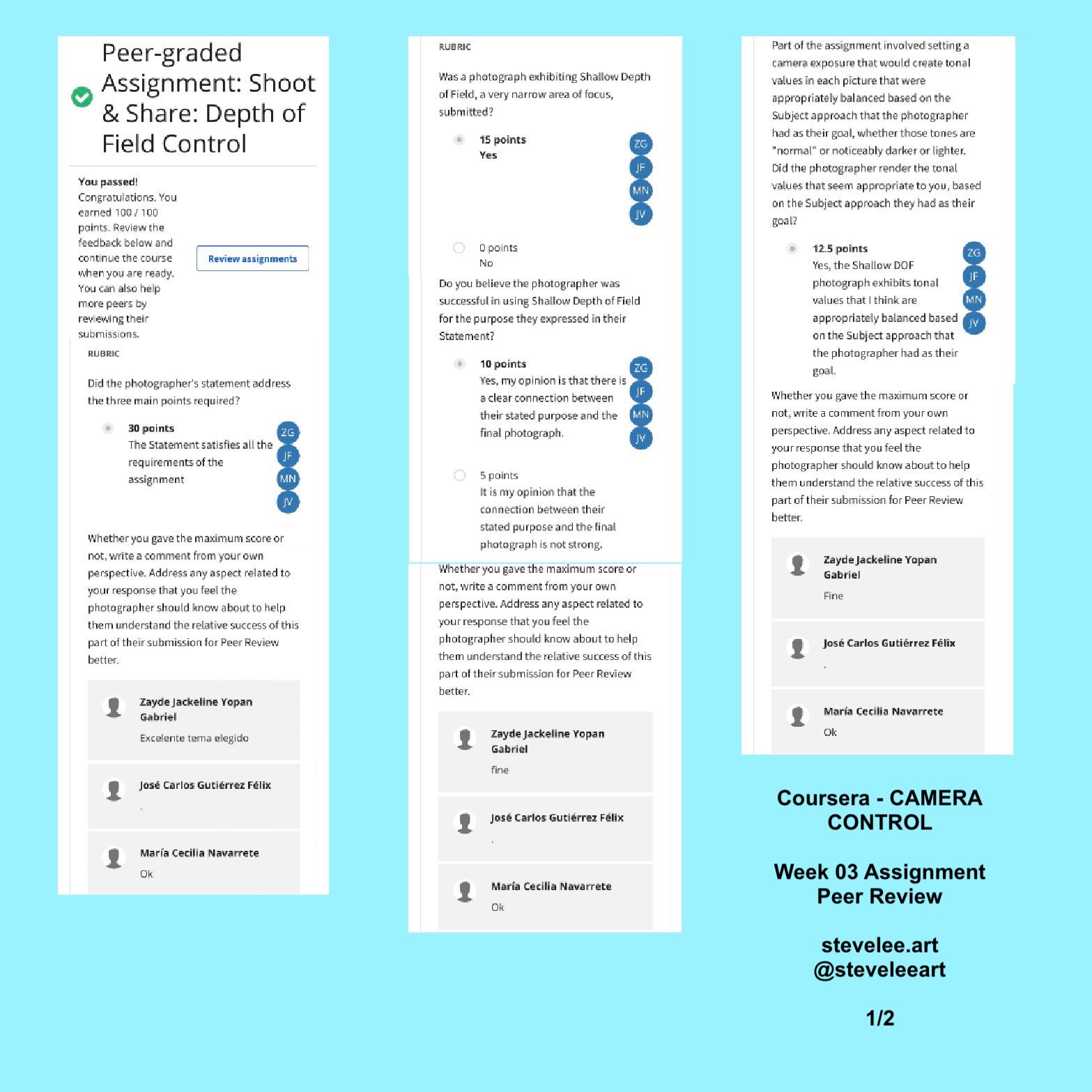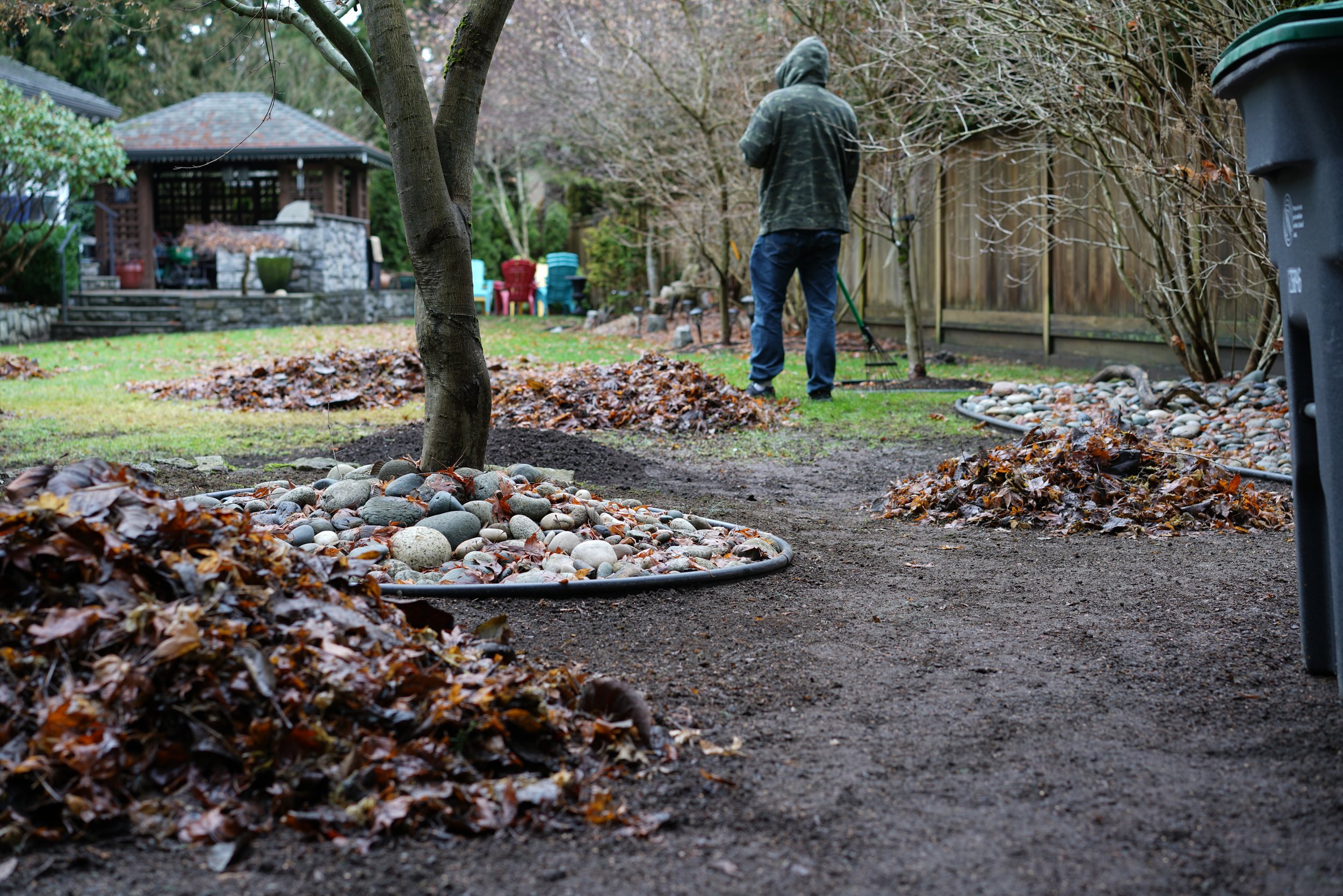In Module 3 you will learn about the meaning of "Depth of Field," and how it can be controlled to create areas of focus that are perfect for the type of content you wish to convey in your photographs, whether they are for business or pleasure, art or industry.
Assignment - Shoot & Share: Depth of Field Control
You have learned many things about Depth of Field (aka "DOF") in this Module, and in this assignment you will be able to use that new knowledge. You are also gaining a greater understanding of one or more subjects you enjoy photographing, and in this assignment you will also be able to continue exploring that content.
Whether your photography is primarily work-related, family and friends, landscapes, portraits, or abstract expression, you are vitally interested in certain subjects. There are certain people, places, or things that excite you as a photographer, and in this assignment you will share that passion with your peers! Narrow in on a Subject that is among your favorite interests in photography as the focus of this assignment, and write a sentence to guide your work before you begin photographing. As you'll see below, we use the example of a Subject we call, "the sweetness of life." This will help keep you focused on a distinct content approach that you have defined after considering things that make you the unique individual you are. It will also help your reviewers understand this particular context within which you enjoy creating pictures.
Plan ahead if necessary, and make any necessary arrangements you need in order to be able to complete your photography (for example arranging for models, gathering still life objects, planning for time to photograph at a worksite, etc.)
Review the principles for control of depth of field, and think about how you might use that knowledge BEFORE you set out to photograph. Thinking about how you will use those principles, and even pre-planning a picture or two, can help you get started and then branch off into more experimentation. Remind yourself of these effects: of focusing close or far; of large or small aperture size; and of long or short focal length lenses.
Please do not concentrate so much on DOF that you neglect proper exposure to create appropriate overall darkness, or lightness, or middle tonal values! Be sure that your photographs are properly exposed for the purposes you are trying to achieve in responding to your subject. There ARE times when it is important to have an overly dark or light scene, especially when you are trying to convey a mood rather than a more direct documentary content, but make the tones purposeful.
Make two photographs, not necessarily from the same vantage point or of the same scene. One photograph will show the effects characteristic of Shallow Depth of Field (a very narrow band of focus with other areas of the picture noticeably out of focus), and; one photograph will show the effects characteristic of Great Depth of Field (a large space from fore to background that is reasonably in focus). (JPEG FILE FORMAT ONLY, please no TIFF, PDF, or others!)
Frame a composition that you feel successfully arranges visual elements to give the viewer a sense of purposeful direction, that results in a well composed picture that an average viewer would feel is "balanced."
Write a brief Statement of 3-6 sentences: the first sentence should be the one you wrote before you began the project, that guided your approach to the Subject (for example, " My subject is a philosophy I call the 'sweetness of life,' as that approach is very important to me as a person living in somewhat difficult circumstances."); 1-3 sentences describing the photograph, and anything else you like in regard to the purpose for Shallow DOF in the first picture and what techniques you used to achieve it (for example, "I used a telephoto lens to create Shallow DOF to isolate the child from the crowd..."); 1-3 sentences describing the photograph, and anything else you like in regard to the purpose for Great DOF in the second picture and how you achieved it (for example, "to allow as many details in the field of flowers to be clear, I used f.22, a very small aperture...").
Upload both photographs and your statement to the Gallery, each as individual uploads. After uploading, it will be your turn to provide "Peer Review" feedback to your fellow Learners...and they will do the same for you!
“The Banality of Yard Work (Shallow DOF)” - With this photo, I wanted to focus on one small part of the task of raking up leaves, by focusing on how one area has been cleaned up, into a pile that’s ready to be taken away. What’s blurred represents the five other piles, and the leaves that continue across the rest of the grass and throughout the garden beds, also waiting to be raked up. A man, myself, stands alone, as if I’m lost in a dream, or a never-ending nightmare. looking out at the work that awaits him. To achieve this shallow look, I used a flexible spot focus on the first pile of leaves in the foreground and shot the photograph at ISO80, f1.8 @ 1/80s.
“The Banality of Yard Work (Wider / Deeper DOF)” - With this photo, I wanted to focus on the entire yard, so the work that had been done as well as the work that remained was in sharper focus than the first photo, although at f4, the far end of the photo where the gazebo stands is still a bit blurred, which I like, as that area of the yard isn't my concern while I rake up the leaves. I still stand alone, looking out at all the work that still awaits me. To achieve this wider depth of field, I again used a flexible spot focus on the area where I would be standing and shot the photograph at a setting of f4 @ 1/20s, also ISO80.
TITLE: The banality of yard work
DATE: January 17, 2023
My subject focusses on the banal repetitiveness of yard work and other household chores, as they represent chores that I’ve had difficulty in handling in recent years due to my anxiety and depression. I shot these photos with my Sony A7R2 with my FE 55mm f1.8 lens.
With the first photo, I wanted to focus on one small part of the task of raking up leaves, by focusing on how one area has been cleaned up, into a pile that’s ready to be taken away. What’s blurred represents the five other piles, and the leaves that continue across the rest of the grass and throughout the garden beds, also waiting to be raked up. A man, myself, stands alone, as if I’m lost in a dream, or a never-ending nightmare. looking out at the work that awaits him. To achieve this shallow look, I used a flexible spot focus on the first pile of leaves in the foreground and shot the photograph at ISO80, f1.8 @ 1/80s.
With the second photo, I wanted to focus on the entire yard, so the work that had been done as well as the work that remained was in sharper focus than the first photo, although at f4, the far end of the photo where the gazebo stands is still a bit blurred, which I like, as that area of the yard isn't my concern while I rake up the leaves. I still stand alone, looking out at all the work that still awaits me. To achieve this wider depth of field, I again used a flexible spot focus on the area where I would be standing and shot the photograph at a setting of f4 @ 1/20s, also ISO80.
These photos were also posted on Instagram as well as on Flickr here and here.
Peer Review Feedback…
GRADE: 100%



